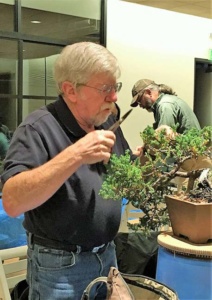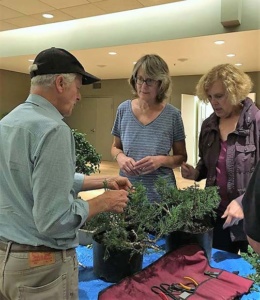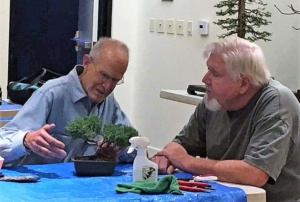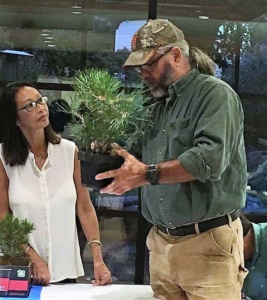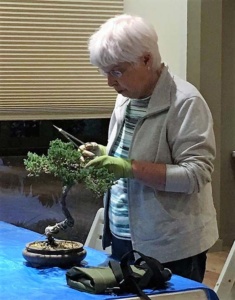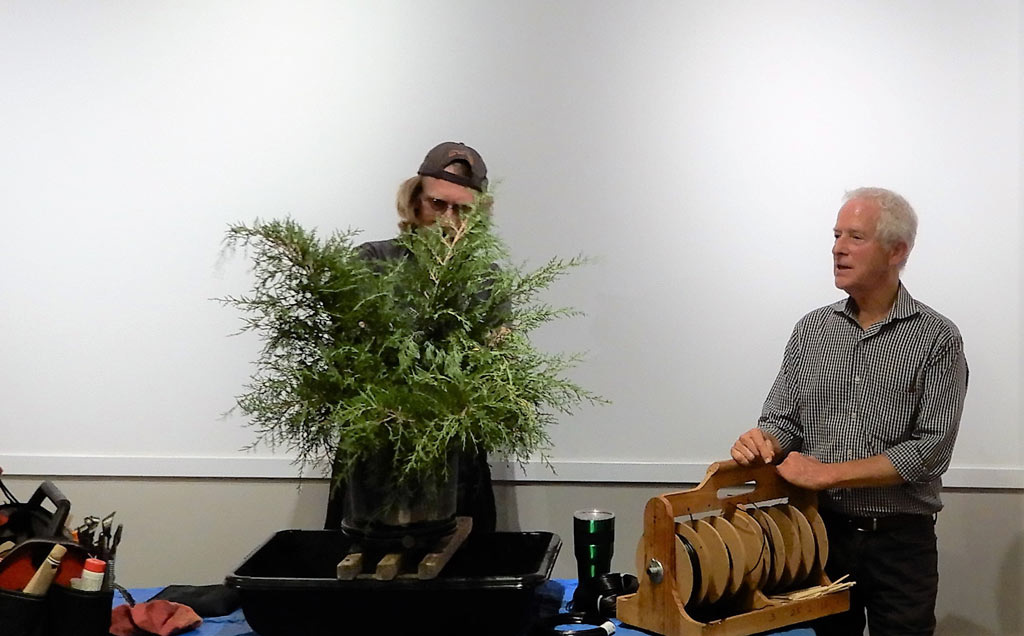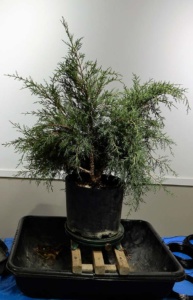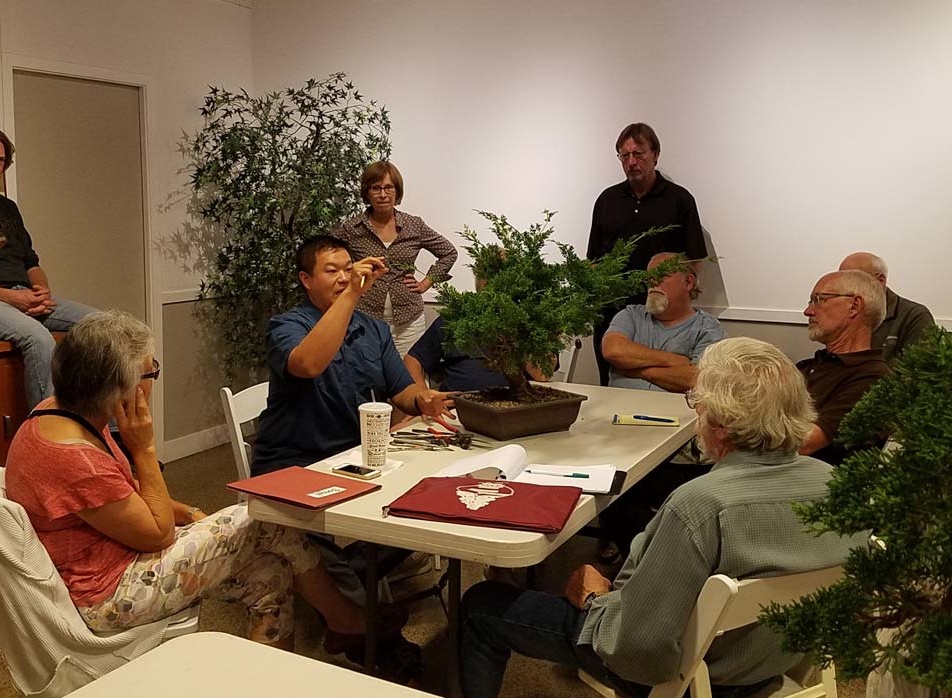Our October meeting featured the final Peter Tea presentation of the year. For demonstration purposes, he brought two trident maples, a cascading cedar, and an Itoigawa juniper. The taller of the two tridents was the same one we’ve seen him work on a couple times before. The other was a shorter, stockier trident that we’ve only seen briefly in prior presentations. The conifers he brought to discuss overall style and pot-choice issues.
Having seen Peter work on the taller trident twice before over the past year really helped the assembled audience see Peter’s plan taking shape in the tree. The frequently trimmed top was beginning to look more ramified, with lots of division going on in the branches, and the untouched lower branches had grown very long with some obvious thickening occurring close to the trunk. Because he wants to continue to thicken the lower branches, Peter’s light trimming this evening was limited to the top of the tree.
Focusing on an area where he had done some prior pruning and wiring, some of it in front of us back in August, Peter pointed out that many of the littlest branches were new just since then. He had already done some trimming in the intervening months, and proceeded to do some more. His goal was to select promising branches and trim out the unnecessary ones. If the branches to be kept had nice short internodes already, they were left alone. Branches that were growing too quickly, with undesirably long internodes, were cut back to the point where they last had a nice short internode length. This method ensures division and ramification in the tree’s top and diverts the tree’s energy to other areas where more vigor is desired, like the lower branches that still need thickening. To review: an internode is the distance between sets of leaves on a branch, the points where the leaves come out being the leaf nodes. Peter was aiming for internode lengths on the order of half an inch in the top of the tree.




